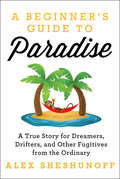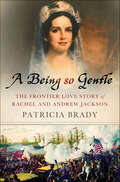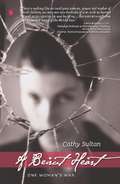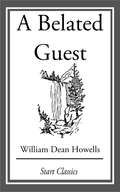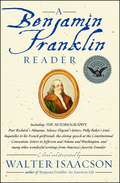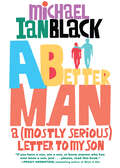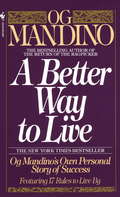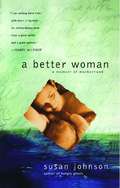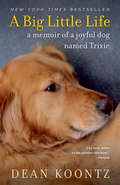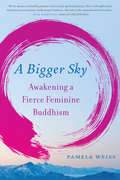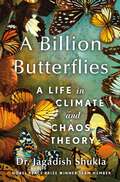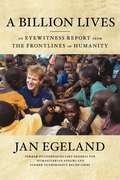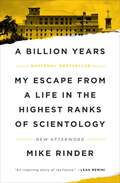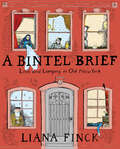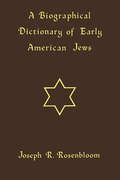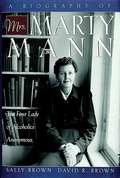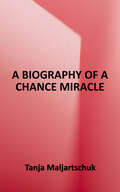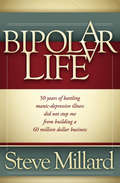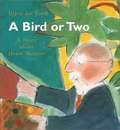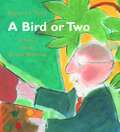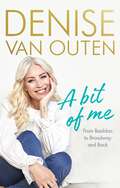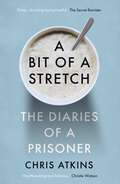- Table View
- List View
A Beginner's Guide to Paradise: A True Story for Dreamers, Drifters, and Other Fugitives from the Ordinary
by Alex SheshunoffSo You Too Can: - Move to a South Pacific Island - Wear a Loincloth - Read a Hundred Books - Diaper a Baby Monkey - Build a Bungalow And Maybe, Just Maybe, Fall in Love! * * Individual results may vary.The true story of how a quarter-life crisis led to adventure, freedom, and love on a tiny island in the Pacific. From the author of a lot of emails and several Facebook posts comes A Beginner’s Guide to Paradise, a laugh-out-loud, true story that will answer your most pressing escape-from-it-all questions, including: 1. How much, per pound, should you expect to pay a priest to fly you to the outer islands of Yap? 2. Classic slumber party stumper: If you could have just one movie on a remote Pacific island, what would it definitely not be? 3. How do you blend fruity drinks without a blender? 4. Is a free, one-hour class from Home Depot on “Flowerbox Construction” sufficient training to build a house? From Robinson Crusoe to Survivor, Gilligan’s Island to The Beach, people have fantasized about living on a remote tropical island. But when facing a quarter-life crisis, plucky desk slave Alex Sheshunoff actually did it. While out in Paradise, he learned a lot. About how to make big choices and big changes. About the less-than-idyllic parts of paradise. About tying a loincloth without exposing the tender bits. Now, Alex shares his incredible story and pretty-hard-won wisdom in a book that will surprise you, make you laugh, take you to such unforgettable islands as Yap and Pig, and perhaps inspire your own move to an island with only two letters in its name. Answers: 1) $1.14 2) Gas Attack Training Made Simple 3) Crimp a fork in half and insert middle into power drill 4) No.From the Hardcover edition.
A Being So Gentle: The Frontier Love Story of Rachel and Andrew Jackson
by Patricia BradyThe forty-year love affair between Rachel and Andrew Jackson parallels a tumultuous period in American history. Andrew Jackson was at the forefront of the American revolution—but he never could have made it without the support of his wife. Beautiful, charismatic, and generous, Rachel Jackson had the courage to go against the mores of her times in the name of love. As the wife of a great general in wartime, she often found herself running their plantation alone and, a true heroine, she took in and raised children orphaned by the war. Like many great love stories, this one ends tragically when Rachel dies only a few weeks after Andrew is elected president. He moved into the White House alone and never remarried. Andrew and Rachel Jackson's devotion to one another is inspiring, and here, in Patricia Brady's vivid prose, their story of love and loss comes to life for the first time.
A Beirut Heart
by Cathy SultanA Beirut Heart is the unforgettable story of an American woman who lived amidst the Lebanese Civil War for eight years and through it all attempted to sustain a life with her Lebanese husband and two small children. It is a memoir that offers a unique illustration of the unsung heroes of war-the women who assume the awesome task of keeping the family united during wartime.The book tells the story of how Cathy Sultan moved with her family to Lebanon in 1969. For six years they led an ideal life experiencing the rich culture, exotic food and breathtaking landscape of the city located along the blue waters of the Mediterranean Sea.After the war began in 1975, their lives changed forever. Sultan recounts how she held the family together by comforting her children after bomb blasts and consoling her physician husband who spent his days treating wounded civilians. To keep sane, she used cooking as her tranquilizer.The unique narrative places us uncomfortably inside something we seldom consider-the domestic element of civil war-and leaves on the reader a permanent impression of the destroyed city and its resilient people.
A Belated Guest
by William Dean HowellsWilliam Dean Howells (18371920) was an American realist author and literary critic. He wrote his first novel, Their Wedding Journey, in 1871, but his literary reputation really took off with the realist novel A Modern Instance, published in 1882, which describes the decay of a marriage. His 1885 novel The Rise of Silas Lapham is perhaps his best known, describing the rise and fall of an American entrepreneur in the paint business. His social views were also strongly reflected in the novels Annie Kilburn (1888) and A Hazard of New Fortunes (1890). While known primarily as a novelist, his short story "Editha" (1905) included in the collection Between the Dark and the Daylight (1907) appears in many anthologies of American literature. Howells also wrote plays, criticism, and essays about contemporary literary figures such as Ibsen, Zola, Verga, and, especially, Tolstoy, which helped establish their reputations in the United States. He also wrote critically in support of many American writers. It is perhaps in this role that he had his greatest influence.
A Benjamin Franklin Reader
by Walter IsaacsonSelected and annotated by the author of the acclaimed Benjamin Franklin: An American Life, this collection of Franklin's writings shows why he was the bestselling author of his day and remains America's favorite Founder and wit. As a twelve-year-old apprentice in his brother's print shop, Benjamin Franklin taught himself to be a writer by taking notes on the works of great essayists such as Addison and Steele, jumbling them up, and then trying to recreate them in his own words. By that method, he recalled in his Autobiography, he was encouraged to think he might become a "tolerable" writer. In fact, he became the best, most popular, and most influential writer in colonial America. His direct and practical prose shaped America's democratic character, and his homespun humor gave birth to the nation's unique brand of crackerbarrel wisdom. This book collects dozens of Franklin's delight-ful essays and letters, along with a complete version of his Autobiography. It includes an introductory essay exploring Franklin's life and impact as a writer, and each piece is accompanied by a preface and notes that provide background, context, and analysis. Through the writings and the introductory essays, the reader can trace the development of Franklin's thinking, along with the birth of the nation he and his pen helped to invent.
A Better Ending: A Brother's Twenty-Year Quest to Uncover the Truth About His Sister's Death
by James Whitfield Thomson&“Haunting and heartfelt...Thomson&’s memoir is meticulously recounted with powerful suspense and hard-earned wisdom.&” —Robert Kolker, author of Hidden Valley Road A propulsive and moving memoir about a brother&’s decades-long investigation into the circumstances surrounding his sister&’s tragic death—and his own journey to forgiveness and closure.On a summer evening in 1974, Jim Thomson arrived home from a baseball game to the news that his younger sister, Eileen, had taken her own life. To Jim, his parents, and his brother, Keith, the loss was unexpected and devastating. Only twenty-seven years old, Eileen had been living in California with her high school sweetheart, Vic, a cop, surrounded by a circle of close friends and working at a job she loved. It seemed unfathomable that she would kill herself, but as the family gathered in Pittsburgh to say goodbye, more details emerged that seemed to explain the tragedy: Eileen had confided in her parents that she had been suffering from depression, and her storybook marriage had been plagued by bitter fights, infidelity, and guilt. When Jim eventually sat down with his brother-in-law to talk about the final hours of Eileen&’s life, Vic looked him in the eye and explained that he had stormed out of the room in the midst of a volatile argument. Moments later, a gunshot went off. Sensing no lies or evasion, Jim believed him. He recounted the story to the rest of the family, and they got on with their lives as best they could. Twenty-seven years later, with all of his family passed away, Eileen&’s death began to nag at Jim. Now a writer, he wanted to fill in the blanks of her story and answer the questions that were plaguing him. What had the final months of Eileen&’s life been like? Why had she not told him about her troubles? How had the infidelity in her marriage brought her and Vic to that fateful day, and who else had been a part of it? What other demons had she been battling? Determined to uncover the truth, Jim hired a private investigator to help him. Together, they tracked down Eileen&’s old friends and clandestinely obtained copies of police reports, which revealed that Vic and Eileen&’s relationship—and the sheriff&’s investigation that followed her death—was much darker and more complicated than they had imagined. Torn by doubt, Jim began a two-decade journey that took him from the streets of Pittsburgh to the hills of San Bernardino, leading him into a tangled web of secrecy, deception, and shifting stories that forced him to reconsider everything he thought he knew about Vic, Eileen, and himself—and to confront the chilling question of whether his sister had really taken her own life. Told with the precision and pace of a whodunit and the searing emotion of a family saga, A Better Ending is an unforgettable tale about the love between siblings, the murkiness of truth and memory, and the path to acceptance.
A Better Man: A (Mostly Serious) Letter to My Son
by Michael Ian Black&“Raw, intimate, and true . . . A Better Man cracked me wide open, and it&’s a template for the conversation we need to be having with our boys.&” —Peggy Orenstein, bestselling author of Boys & Sex A poignant look at boyhood, in the form of a heartfelt letter from comedian Michael Ian Black to his teenage son before he leaves for college, and a radical plea for rethinking masculinity and teaching young men to give and receive love. In a world in which the word masculinity now often goes hand in hand with toxic, comedian, actor, and father Michael Ian Black offers up a way forward for boys, men, and anyone who loves them. Part memoir, part advice book, and written as a heartfelt letter to his college-bound son, A Better Man reveals Black&’s own complicated relationship with his father, explores the damage and rising violence caused by the expectations placed on boys to &“man up,&” and searches for the best way to help young men be part of the solution, not the problem. &“If we cannot allow ourselves vulnerability,&” he writes, &“how are we supposed to experience wonder, fear, tenderness?&” Honest, funny, and hopeful, Black skillfully navigates the complex gender issues of our time and delivers a poignant answer to an urgent question: How can we be, and raise, better men?
A Better Way to Live: Og Mandino's Own Personal Story of Success Featuring 17 Rules to Live By
by Og MandinoOg Mandino is the leading inspirational author in the world. But once, he was a thirty-five year old derelict who nearly spend his last few dollars on a suicide gun. Now, for the first time ever, he describes the joyously redemptive process that turned a down-and- out alcoholic into a millionaire and a happy man within ten years. Og Mandino is the only person who could tell this heartwarming tale of personal triumph--because it is his own true story. And it can profoundly influence your life.
A Better Woman
by Susan JohnsonAcclaimed novelist Susan Johnson found, at age thirty-five, that her desire to have a baby became overwhelming. She had no inkling what motherhood would cost -- or give -- her. But as she went on to experience pregnancy and birth, and their impact on her marriage, health, and heart, she recorded it all. In this hauntingly lovely account, Johnson portrays a woman transformed by motherhood, and a writer forever changed by a widening chasm of experience. Her initial ecstasy jostles against bewilderment, rage, and despair, however, when she develops a rare complication of childbirth; she is "a one-woman catastrophe, a small ruined country." She is also burning to get words on paper. The result, A Better Woman, should be required reading for every woman hungry to give birth -- and every mother yearning to have her deepest feelings heard.
A Big Little Life: A Memoir of a Joyful Dog Named Trixie
by Dean KoontzIn a profound, funny, and beautifully rendered portrait of a beloved companion, bestselling novelist Dean Koontz remembers the golden retriever who changed his life. A retired service dog, Trixie was three when Dean and his wife, Gerda, welcomed her into their home. She was superbly trained, but her greatest gifts couldn't be taught: her keen intelligence, her innate joy, and an uncanny knack for living in the moment. Whether chasing a tennis ball or protecting those she loved, Trixie gave all she had to everything she did, inspiring Dean and Gerda to trust their instincts and recapture a sense of wonder that will remain with them always. Trixie lived fewer than twelve years; in this wide world, she was a little thing. But in every way that mattered, she lived a big life.
A Bigger Picture: My Fight to Bring a New African Voice to the Climate Crisis
by Vanessa NakateA manifesto and memoir about climate justice and how we can—and must—build a livable future for all, inclusive to all, by a rising star of the global climate movement Leading climate justice activist Vanessa Nakate brings her fierce, fearless spirit, new perspective, and superstar bona fides to the biggest issue of our time. In A Bigger Picture, her first book, she shares her story as a young Ugandan woman who sees that her community bears disproportionate consequences to the climate crisis. At the same time, she sees that activists from African nations and the global south are not being heard in the same way as activists from white nations are heard. Inspired by Sweden&’s Greta Thunberg, in 2019 Nakate became Uganda&’s first Fridays for Future protestor, awakening to her personal power and summoning within herself a commanding political voice. Nakate&’s mere presence has revealed rampant inequalities within the climate justice movement. In January 2020, while attending the World Economic Forum in Davos, Switzerland, as one of five international delegates, including Thunberg, Nakate&’s image was cropped out of a photo by the Associated Press. The photo featured the four other activists, who were all white. It highlighted the call Nakate has been making all along: for both environmental and social justice on behalf of those who have been omitted from the climate discussion and who are now demanding to be heard. From a shy little girl in Kampala to a leader on the world stage, A Bigger Picture is part rousing manifesto and part poignant memoir, and it presents a new vision for the climate movement based on resilience, sustainability, and genuine equity.
A Bigger Sky: Awakening a Fierce Feminine Buddhism
by Pamela WeissReimagining Buddhism through a feminine lens: A powerful memoir of healing, strength, and spiritual awakening.Written by the first and only layperson to receive full dharma transmission in the Suzuki Roshi Soto Zen lineage, A Bigger Sky explores what it means to traverse the gaps of a Buddhism created by and for men, navigate the seemingly contradictory domains of secular and spiritual life, and walk a path through the heart of the world. Blending memoir, Buddhist practice, and cultural observation, Weiss reorients Buddhism through a wider and more inclusive feminine lens. Her personal and spiritual journey speaks to the bits of brokenness in us all, shining a light on the different pathways we can walk to become whole. Through beautifully crafted prose, Weiss shares what it means to be an ordinary Bodhisattva, describing how the Buddha's profound vision of freedom can be lived outside of institutions and rule-bound practice to support us in deepening our connection with ourselves, each other, and the planet. A Bigger Sky illuminates how integrating a more feminine approach to Buddhist teachings can be applied in spiritual practice, community, relationships, and day-to-day life.
A Billion Butterflies: A Life in Climate and Chaos Theory
by Dr. Jagadish ShuklaThe amazing true story of the man behind modern weather predictionConsider a world without weather prediction. How would we know when to evacuate communities ahead of fires or floods, or figure out what to wear tomorrow? Until 40 years ago, we couldn’t forecast weather conditions beyond ten days. Renowned climate scientist Dr. Jagadish Shukla is largely to thank for modern weather forecasting. Born in rural India with no electricity, plumbing, or formal schools, he attended classes that were held in a cow shed. Shukla grew up amid turmoil: overwhelming monsoons, devastating droughts, and unpredictable crop yields. His drive brought him to the Indian Institute of Tropical Meteorology, despite little experience. He then followed an unlikely path to MIT and Princeton, and the highest echelons of climate science. His work, which has enabled us to predict weather farther into the future than previously thought possible, allows us to feed more people, save lives, and hold on to hope in a warming world.Paired with his philanthropic endeavors and extreme dedication to the field, Dr. Shukla has been lauded internationally for his achievements, including a shared Nobel Peace Prize with Al Gore for his governmental research on climate change. A Billion Butterflies is a wondrous insider’s account of climate science and an unbelievable memoir of his life. Understanding dynamical seasonal prediction will change the way you experience a thunderstorm or interpret a forecast; understanding its origins and the remarkable story of the man who discovered it will change the way you see our world.
A Billion Lives
by Jan EgelandCalled "the world's conscience" and one of the 100 most influential people of our time by Time magazine, Jan Egeland has been the public face of the United Nations. As Undersecretary-General for Humanitarian Affairs, he was in charge of the Office for the Coordination of Humanitarian Affairs (OCHA) for three and a half years. One of the bravest and most adventuresome figures on the international scene, Egeland takes us to the frontlines of war and chaos in Iraq, to scenes of ethnic cleansing in Darfur, to the ground zeroes of famine, earthquakes, and tsunamis. He challenges the first world to act. A Billion Lives is his on-the-ground account of his work in the most dangerous places in the world, where he has led relief efforts, negotiated truces with warlords, and intervened in what many had thought to be hopeless situations. As one of Secretary-General Kofi Annan's closest advisers, Jan Egeland was at the heart of crises during a difficult period in UN history, when the organization was plagued by the divisive aftermath of the Iraq war, the Oil-for-Food scandal, and terror attacks against UN workers. On the day Egeland came to New York to take up his job, the UN building in Baghdad was destroyed by a huge bomb, killing one of his predecessors, Sergio de Mello. Two months later Annan sent Egeland to Iraq to judge whether the UN could keep a presence there. Since that first mission to Baghdad, Egeland has been envoy to such places as Darfur, Eastern Congo, Lebanon, Gaza, Northern Israel, Northern Uganda, and Colombia. He coordinated the massive international relief efforts after the Indian Ocean tsunami and South Asian earthquake. As a negotiator and activist, Egeland is famous for direct language, whether he's addressing warlords, guerrilla leaders, generals, or heads of state. A Billion Lives is his passionate, adventure-filled eyewitness account of the catastrophes the world faces. And so Egeland writes that he has met the best and worst among us, has "confronted warlords, mass murderers, and tyrants, but [has] met many more peacemakers, relief workers, and human rights activists who risk their lives at humanity's first line of defense." In spite of the desperate need of so many, Egeland is convinced that, "For the vast majority of people, the world is getting better, that there is more peace, more people fed and educated, and fewer forced to become refugees than a generation ago. So there is reason for optimism," he concludes in this groundbreaking book that does not flinch but holds out reasons for hope.
A Billion Years: My Escape From a Life in the Highest Ranks of Scientology
by Mike RinderOne of the highest-ranking defectors from Scientology exposes the secret inner workings of the powerful organization in this remarkable memoir.Mike Rinder&’s parents began taking him to their local Scientology center when he was five years old. After high school, he signed a billion-year contract and was admitted into Scientology&’s elite inner circle, the Sea Organization. Brought to founder L. Ron Hubbard&’s yacht and promised training in Hubbard&’s most advanced techniques, Mike was instead put to work swabbing the decks. Still, Rinder bought into the doctrine that his personal comfort was secondary to the higher purpose of Hubbard&’s world-saving mission, swiftly rising through the ranks. In the 1980s, Rinder became Scientology&’s international spokesperson and the head of its powerful Office of Special Affairs. He helped negotiate Scientology&’s pivotal tax exemption from the IRS and engaged with the organization&’s prominent celebrity members, including Tom Cruise, Lisa Marie Presley, and John Travolta. Yet Rinder couldn&’t shake a nagging feeling that something was amiss—Hubbard&’s promises remained unfulfilled at his death, and his successor, David Miscavige, was a ruthless and vindictive man who did not hesitate to confine many top Scientologists, Mike among them, to a makeshift prison known as the Hole. In 2007, at the age of fifty-two, Rinder finally escaped Scientology. Overnight, he became one of the organization&’s biggest public enemies. He was followed, hacked, spied on, and tracked. But he refused to be intimidated and today helps people break free of Scientology. In A Billion Years, the dark, dystopian truth about Scientology is revealed as never before. Rinder offers insights into the religion that only someone of his former high rank could provide and tells a harrowing but fulfilling story of personal resilience.
A Bintel Brief: Love and Longing in Old New York
by Liana FinckAn evocative, elegiac love letter to New York City and the immigrant culture that continues to make it the most original and influential city in the world.As the nineteenth century gave way to the twentieth, a surge of Jewish immigrants to New York City reshaped indelibly not only the culture of the metropolis but of America itself. Struggling to assimilate to a new world while reconciling it to the old one they had left behind, these men and women shared their most private hopes and fears in a series of letters submitted to "A Bintel Brief"—Yiddish for "A Bundle of Letters"—the enormously popular, deeply affecting and often hilarious advice column of the newspaper The Forward.Conceived by Abraham Cahan, editor of The Forward, who answered every letter himself, A Bintel Brief transformed the fortunes of the paper, rapidly making it the most widely read Yiddish-language newspaper in the world. The letters that flooded into A Bintel Brief spoke with unparalleled immediacy to the daily heartbreaks and comedies of their bewildered writers' new lives, capturing the hope, isolation and confusion of assimilation, from intergenerational family politics and judgmental neighbors to crises of faith, unrequited love, runaway husbands, soul-crushing poverty and the difficulty of building an entirely new life from scratch.Drawn from these letters—selected and adapted by Liana Finck and brought to life in her singularly expressive illustrations that combine Art Spiegelman's deft emotionality and the magical spirit of Marc Chagall—A Bintel Brief is a wonderful panorama of a world and its people who, though long gone, are startlingly like ourselves. It is also a platonic love story of sorts between Abraham Cahan and Liana, as they engage in a bittersweet dialogue that explores the pleasures and perils of nostalgia, even as it affirms the necessary forward movement of life.
A Biographical Dictionary of Early American Jews: Colonial Times Through 1800
by Joseph R. RosenbloomA remarkable reference for those interested in American Jewish history, comprising approximately four thousand names and supplemental data.Here is a near complete list of persons identifiable as Jews in America by 1800, the result of a thorough search of manuscript materials and published literature for the names of Jews who lived in America (including Canada up to 1783) during the seventeenth and eighteenth centuries.No other study provides comparable information for such an ethnic group in this country. The result of a years-long effort that began as a rabbinical thesis for the Hebrew Union College Jewish Institute of Religion and was eventually expanded, it serves as an essential reference for historians and other researchers.
A Biography of Mrs Marty Mann: The First Lady of Alcoholics Anonymous
by Sally Brown David R. BrownMarty Mann was the first woman to achieve long-term sobriety in Alcoholics Anonymous, and she inspired thousands of others, especially women, to help themselves.The little-known life of Marty Mann rivals a Masterpiece Theatre drama. She was born into a life of wealth and privilege, sank to the lowest depths of poverty and despair, then rose to inspire thousands of others, especially women, to help themselves. The first woman to achieve long-term sobriety in Alcoholics Anonymous, Marty Mann advocated the understanding that alcoholism is an issue of public health, not morality. In their fascinating book, Sally and David Brown shed light on this influential figure in recovery history. Born in Chicago in 1905, Marty was favored with beauty, brains, charisma, phenomenal energy, and a powerful will. She could also out drink anyone in her group of social elites. When her father became penniless, she was forced into work, landed a lucrative public relations position, and a decade later was destitute because of her drinking. She was committed to a psychiatric center in 1938-a time when the term alcoholism was virtually unknown, the only known treatment was "drying out," and two men were compiling the book Alcoholics Anonymous. Marty read it on the recommendation of psychiatrist Dr. Harry Tiebout: it was her first step toward sobriety and a long, illustrious career as founder of the National Council on Alcoholism, or NCA.In the early 1950s, journalist Edward R. Murrow selected Marty as one of the 10 greatest living Americans. Marty died of a stroke in 1980, shortly after addressing the AA international convention in New Orleans.This is a story of one woman's indefatigable effort and indomitable spirit, compellingly told by Sally and David Brown.
A Biography of a Chance Miracle
by Tanja MaljartschukA Biography of a Chance Miracle explores the life of Lena, a young girl growing up in the somewhat vapid, bureaucracy-ridden, and nationalistic Western Ukrainian city of San Francisco. Lena is a misfit from early childhood due to her unwillingness to scorn everything Russian, her propensity for befriending forlorn creatures, her aversion to the status quo, and her fear of living a stupid and meaningless life. As her friends enter college, Lena sets forth on a mission to defend the abused and downtrodden of San Francisco--be they canine or human--armed with nothing more than an arsenal of humor, stubbornness, chutzpah and no shortage of imagination. Her successes are minimal at best, but in the process of trying to save San Francisco's collective humanity, she may end up saving her own. At first glance a crazy and combative girl, Lena just may be the salvation that the Ukrainians of San Francisco sorely need. With haiku-like precision, Tanja's deceptively simple writing style blends surrealism and magical realism with satirical wit, occasionally outlandish humor and poignant social commentary. The German literary media has described her depictions of contemporary Ukraine as full of humor and absurdity, but "more exact and harsher" than those of her peers, comparing her to the 19th-century Russian satirist Saltykov-Shchedrin and hailing her as "a name to be remembered." This work, her most provocative to date, was a finalist for the 2012 BBC Book of the Year Award in Ukraine, and has been lauded as "simply ingenious" by fellow Ukrainian authors.
A Bipolar Life: 50 Years of Battling Manic-Depressive Illness Did Not Stop Me From Building a 60 Million Dollar Business
by Steve MillardThe former Brookstone marketing guru gives &“proof of the fact that even in the face of this illness, a person can lead a rewarding and fulfilling life&” (Howard Lester, former Williams-Sonoma CEO). For more than forty-five years, Steve Millard has struggled with bipolar disorder. At his lowest, he was on the absolute brink of suicide, looking down into the abyss. Through his own methods of dealing with this disease, arrived at by trial and error, and the generous help of friends, and the teachings of a wonderful support group called Recovery Inc., he not only survived, he prospered, founding one of the most successful and profitable businesses in the direct marketing industry. A Bipolar Life is the story of his struggle. &“I have witnessed many of [Steve&’s] struggles with bipolar disorder and can only imagine how difficult they are for him. I have also witnessed his high, his incredible zest for life and the ability to live life to its fullest. But equally important, I have witnessed his marketing skills and how he helped pioneer the catalog and direct marketing industry. Those skills were a major part of the dynamic growth of the Brookstone Company.&” —Doug Anderson, former President, Brookstone &“Steve Millard was a good friend of L.L. Bean and a catalog marketing consultant instrumental to our success. He was upbeat and outgoing in his public life but quietly and courageously dealt with his emotional illness.&” —Leon Gorman, former CEO L.L. Bean
A Bird or Two: A Story about Henri Matisse
by Bijou Le TordSimple text and bright illustrations describe the work of French painter, Henri Matisse, particularly his joyful use of color.
A Bird or Two: A Story about Henri Matisse (Incredible Lives for Young Readers)
by Bijou Le TordGreens greener than apples, yellows more yellow than lemons. . . In the brilliant sun of Nice, France, Henri Matisse painted the brightest, boldest colors he could imagine. Joyfully he painted everywhere and everyone. Enchanted and with a light heart, he painted all the time.A Bird or Two introduces young readers to the beloved painter Henri Matisse. Bijou Le Tord's delightful illustrations capture the vivid colors of Matisse, and her poetic words sing to the music of his pictures.
A Bishop's Tale: Mathias Hovius Among His Flock in Seventeenth-century Flanders
by Craig Harline Eddy PutDrawn from the rare journal of the Archbishop of Mechelen from 1596 to 1620, this biography sheds light on the colorful life of Mathias Hovius, as well as the key events and characters of the Catholic Reformation period. The authors relate the stories of monks, nuns, priests, pilgrims, peasant women, saints, and others. 24 illustrations.
A Bit of Me: From Basildon to Broadway, and back
by Denise Van OutenDenise Van Outen, original 90s 'ladette', West End star and primetime TV favourite, reveals for the first time the true story of grit and graft beneath the famous Essex sparkle.In this refreshingly candid memoir, Denise speaks openly and sensitively about her rollercoaster career, her struggles in a past high-profile relationship and the betrayal she suffered at the hands of those once closest to her, with the hope that in doing so, she can help empower others to avoid and overcome any similar difficulties they may face.Denise shot to fame on The Big Breakfast in her early twenties. After a decade grafting through theatre jobs and children's TV shows, she was finally living the dream. However her life soon turned into a nightmare off-screen and behind the headlines as her heart was broken in a very public relationship, whilst her every move was printed in the tabloids thanks to her phone being tapped. After receiving a panning by the critics for her late night TV show aimed at the post-pub crowd, she then auditioned for and accepted an offer to play Roxie Hart in Chicago, which turned out to be a life-changing experience. The role took her to Broadway, where she caught the eye of one Andrew Lloyd Webber, eventually landing a judging role on Any Dream Will Do, which saw her rise back to primetime and the career that she loves, where she has stayed and flourished. Now, in her first memoir, Denise tells her story with disarming candour, unafraid to reveal vulnerabilities beneath the cheerful exterior. Tackling difficult subjects of corrosive self-doubt, betrayal, invasions of privacy and professional struggles, interjected with the familiar humour that we all know and love, A Bit of Me is personal, at times raw, often mischievous and always compelling. Denise has lived the life, learned the lessons, and Basildon to Broadway and back is a hell of a journey.
A Bit of a Stretch: The Diaries of a Prisoner
by Chris Atkins'Shocking, scathing, entertaining.' Guardian 'Incredibly compelling.' The Times'Heart-breaking.' Sunday TimesWhere can a tin of tuna buy you clean clothes? Where is it easier to get 'spice' than paracetamol? Where does self-harm barely raise an eyebrow?Welcome to Her Majesty's Prison Service. Like most people, documentary-maker Chris Atkins didn't spend much time thinking about prisons. But after becoming embroiled in a dodgy scheme to fund his latest film, he was sent down for five years. His new home would be HMP Wandsworth, one of the largest and most dysfunctional prisons in Europe.With a cast of characters ranging from wily drug dealers to senior officials bent on endless reform, this powerful memoir uncovers the horrifying reality behind the locked gates. Filled with dark humour and shocking stories, A Bit of a Stretch reveals why our creaking prison system is sorely costing us all - and why you should care.
